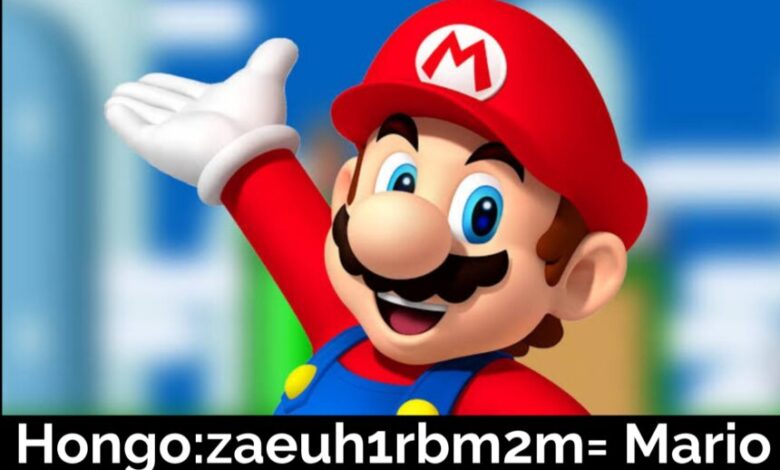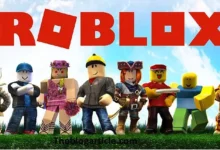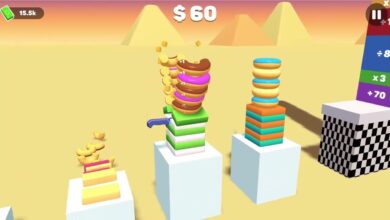The Mushroom Kingdom’s Resident Fungi: An In-Depth Exploration of Hongo in the Mario Universe

The world of Super Mario is brimming with iconic characters, colorful environments, and exciting adventures. Among the many elements that make the Mario franchise stand out are the mushrooms—referred to as “Hongo” in Spanish and Japanese—that play critical roles throughout the series. These mushrooms have become synonymous with Mario games, symbolizing power-ups, new abilities, and even life-restoring magic. hongo:zaeuh1rbm2m= mari
In this long-form article, we will explore the essence of Hongo (mushrooms) in the Mario universe, their origins, different types, functions, and their cultural significance within the series. Whether you are a seasoned Mario fan or new to the franchise, understanding these mushrooms is key to appreciating the intricate gameplay dynamics and narrative depth of Mario games.
The Role of Mushrooms in Super Mario Games
In the vast and vibrant world of Mario, one of the most iconic and central elements is the use of mushrooms. Known as “Hongo” in both Japanese and Spanish, these fungi play a multifaceted role, going far beyond simple decorations or hongo:zaeuh1rbm2m= mario
background elements. Mushrooms in Mario games are often the primary source of power-ups, allowing characters to grow, gain extra lives, or acquire unique abilities.hongo:zaeuh1rbm2m= mario
Since the release of Super Mario Bros. in 1985, mushrooms have been an integral part of Mario’s gameplay mechanics. They act as transformative items that alter the state of the character and provide the player with more strategic options to tackle enemies and obstacles. From helping Mario grow taller with the Super Mushroom to saving him from defeat with the 1-Up Mushroom, these fungi offer a dynamic experience that is both fun and rewarding for players.hongo:zaeuh1rbm2m= mario
Gameplay Relevance
The significance of mushrooms within Mario games cannot be overstated. They are often strategically placed within levels to give players a fighting chance or a needed boost. Whether they are tucked inside blocks or floating in the air, these power-ups provide a safety net in the game’s more challenging sections.hongo:zaeuh1rbm2m= mario
ver the decades, these mushrooms have expanded in number and functionality, offering players more ways to interact with the world. As the Mario franchise evolved, so too did the importance of mushrooms, further cementing their role as symbols of growth, both literally and figuratively.
History of Hongo in the Mario Franchise
The first instance of a mushroom in a Mario game dates back to the original Super Mario Bros., released in 1985 for the Nintendo Entertainment System (NES). In this game, the now-famous Super Mushroom made its debut, allowing Mario to grow larger upon consumption. This simple but effective power-up mechanic introduced players to the idea that mushrooms in Mario games are not just ordinary items; they are magical, game-changing elements.hongo:zaeuh1rbm2m= mario
Mushrooms are deeply rooted in Japanese folklore and symbolism, often representing vitality and renewal. This cultural backdrop may have influenced the design of Mario’s mushrooms, as they serve to “revive” Mario when needed, much like how mushrooms can symbolize growth in nature. Over time, Nintendo expanded the types and roles of mushrooms in Mario games, making them central to the gameplay experience across multiple titles.hongo:zaeuh1rbm2m= mario
Types of Mushrooms in Mario Games
Mario games feature a diverse array of mushrooms, each with its own unique abilities and effects. Let’s break down the major types of mushrooms players can encounter in the series:
- Super Mushroom: The classic power-up that makes Mario grow larger.
- 1-Up Mushroom: Grants Mario an extra life.hongo:zaeuh1rbm2m= mario
- Mega Mushroom: A giant mushroom that transforms Mario into a colossal version of himself, capable of destroying almost anything in his path.hongo:zaeuh1rbm2m= mario
- Mini Mushroom: Shrinks Mario to a tiny size, allowing him to access small passageways.
- Propeller Mushroom: Grants Mario the ability to soar through the air by spinning.
- Poison Mushroom: A dangerous mushroom that harms Mario instead of helping him.
- Each mushroom type offers a distinct advantage (or disadvantage) in gameplay, giving players a variety of strategic options to explore.
Super Mushroom
The Super Mushroom is arguably the most recognizable item in the Mario series. First appearing in Super Mario Bros., this red-capped mushroom with white spots allows Mario to grow larger, increasing his resilience against enemies. In his super-sized form, Mario can take one additional hit from enemies or obstacles before returning to his original size. This mechanic introduces an extra layer of protection for players, making the Super Mushroom one of the most sought-after items in the game.
The visual design of the Super Mushroom is simple yet iconic. Its bright colors and distinctive shape make it easy to spot, ensuring players never miss the opportunity to power up. Over the years, the Super Mushroom has become synonymous with the Mario franchise, making appearances in spin-offs, merchandise, and even Nintendo’s marketing.hongo:zaeuh1rbm2m= mario
1-Up Mushroom
Another mushroom staple in Mario games is the 1-Up Mushroom. Recognizable by its green color, the 1-Up Mushroom grants Mario an extra life, giving players an additional chance to complete levels after a game over. This mushroom has saved countless players from frustration, offering a reprieve in difficult stages.
1-Up Mushrooms are often hidden in hard-to-reach places, encouraging players to explore and experiment with their surroundings. Finding a 1-Up Mushroom can feel like a mini-victory within a game, providing not only an extra life but also a sense of accomplishment for the player.
Mega Mushroom
One of the more recent additions to the Mario franchise, the Mega Mushroom made its debut in New Super Mario Bros. for the Nintendo DS. This enormous mushroom allows Mario to grow to gargantuan proportions, towering over enemies and obstacles. In his mega form, Mario can smash through blocks, pipes, and even some enemies that are normally indestructible.
The Mega Mushroom adds a fun, chaotic element to Mario games, as players can cause large-scale destruction across the level. However, its effects are temporary, so players must make the most of their time as a giant Mario before returning to his normal size.
Poison Mushroom
Not all mushrooms in Mario games are beneficial. The Poison Mushroom is a hazardous item that harms Mario rather than helping him. First appearing in Super Mario Bros.: The Lost Levels, the Poison Mushroom is often indistinguishable from its helpful counterparts, making it a tricky obstacle for players.
If Mario accidentally consumes a Poison Mushroom, he will either shrink or lose a life, depending on his current size. This introduces a risk factor into gameplay, as players must be cautious when collecting mushrooms and discerning between the helpful and harmful ones.
Propeller Mushroom
Introduced in New Super Mario Bros. Wii, the Propeller Mushroom grants Mario the ability to fly for short bursts. Upon collecting this power-up, Mario dons a propeller suit, which allows him to soar upwards by spinning in mid-air. This ability is particularly useful for reaching high platforms or avoiding tricky enemy encounters.
The Propeller Mushroom brings a new dimension to Mario’s movement mechanics, adding verticality and freedom of exploration. It’s one of the more modern additions to the mushroom lineup, reflecting Nintendo’s ongoing efforts to innovate within the franchise.
Mini Mushroom
The Mini Mushroom is a unique power-up that shrinks Mario to a tiny size, allowing him to fit through small gaps and access areas that would otherwise be unreachable. This mushroom flips the traditional power-up concept on its head, as it makes Mario weaker and more vulnerable rather than stronger.
However, the Mini Mushroom also gives Mario unique abilities, such as running on water and jumping higher. It’s a power-up that requires careful handling, as players must balance Mario’s new abilities with his increased vulnerability.
The Cultural Symbolism of Mushrooms in Mario
Mushrooms have a rich cultural significance in Japan, often symbolizing growth, rebirth, and transformation. In Japanese folklore, mushrooms are seen as mystical and otherworldly, sometimes associated with the spirit world. This cultural backdrop may have influenced Nintendo’s decision to make mushrooms a central element of Mario’s world.
The idea of mushrooms transforming Mario from small to large, or from vulnerable to powerful, mirrors the symbolic role of mushrooms in Japanese culture. They represent a transition, a moment of change that offers new possibilities. In this way, mushrooms in Mario games are more than just power-ups—they are metaphors for growth and resilience.
Mushrooms Beyond Power-Ups
While mushrooms are most commonly known as power-ups in the Mario series, they also appear in other capacities. For instance, mushrooms are often featured in the background design of levels, contributing to the overall aesthetic of the Mushroom Kingdom. Some levels are even designed around the concept of mushrooms, with platforms that resemble giant toadstools and environments that are rich with fungi.
Additionally, mushrooms are central to the story of Mario’s world, particularly in relation to the Mushroom Kingdom and its inhabitants, the Toads. These characters, with their mushroom-shaped heads, further reinforce the idea that mushrooms are an essential part of Mario’s universe.
Toad: The Mushroom People
One of the most beloved characters in the Mario franchise is Toad, a member of the Mushroom People who serve as loyal subjects of Princess Peach. Toad’s mushroom-like appearance, with his white cap and red spots, reinforces the thematic connection between mushrooms and the Mario universe.
The Mushroom People are central to the narrative of the Mario series, as they inhabit the Mushroom Kingdom and frequently assist Mario in his adventures. Whether as playable characters in games like Mario Kart or as guides in platforming titles, the Toads represent the friendly, helpful side of the Mushroom Kingdom’s fungi.
The Evolution of Mushroom Design in Games
Over the years, the design of mushrooms in Mario games has evolved, becoming more detailed and varied. In early games, mushrooms were simple pixelated images, but as technology improved, their designs became more intricate and lifelike. Today, mushrooms in Mario games are beautifully rendered, with vibrant colors and detailed textures that make them stand out in the game world.
This evolution of design reflects Nintendo’s commitment to keeping the Mario franchise fresh and engaging. By constantly updating the look and feel of mushrooms, Nintendo ensures that they remain an exciting and integral part of the gameplay experience.
Mushrooms in Mario Spin-offs
Mushrooms aren’t just limited to platforming Mario games—they also make appearances in many of Mario’s spin-off titles, such as Mario Kart, Paper Mario, and Mario Party. In these games, mushrooms often serve different functions, such as speed boosts in Mario Kart or health-restoring items in Paper Mario.
Their inclusion in these spin-offs highlights the versatility of mushrooms as symbols of power and renewal. Whether Mario is racing on a track or battling enemies in an RPG, mushrooms continue to play a vital role in his success.
The Future of Mushrooms in Mario Games
As the Mario franchise continues to grow and evolve, it’s likely that mushrooms will remain a central element of the gameplay experience. Nintendo has consistently found new ways to incorporate mushrooms into their games, whether through new power-up mechanics or innovative level designs. With upcoming Mario titles on the horizon, fans can expect to see even more creative uses of mushrooms in the future.
FAQ on Hongo in Mario Games
- What is the most common mushroom in Mario games? The Super Mushroom is the most common and iconic mushroom in Mario games, known for making Mario grow larger.
- How does the 1-Up Mushroom work? The 1-Up Mushroom grants Mario an extra life, giving players an additional chance to complete levels after a game over.
- What is the Poison Mushroom, and what does it do? The Poison Mushroom is a harmful mushroom that can shrink Mario or cause him to lose a life if touched.
- Which Mario game introduced the Mega Mushroom? The Mega Mushroom first appeared in New Super Mario Bros. for the Nintendo DS.
- What does the Mini Mushroom do? The Mini Mushroom shrinks Mario, allowing him to access small areas and jump higher, but it also makes him more vulnerable to enemies.
- Are there mushrooms in non-platform Mario games? Yes, mushrooms appear in various spin-off Mario games like Mario Kart, where they provide speed boosts, and Paper Mario, where they restore health.



